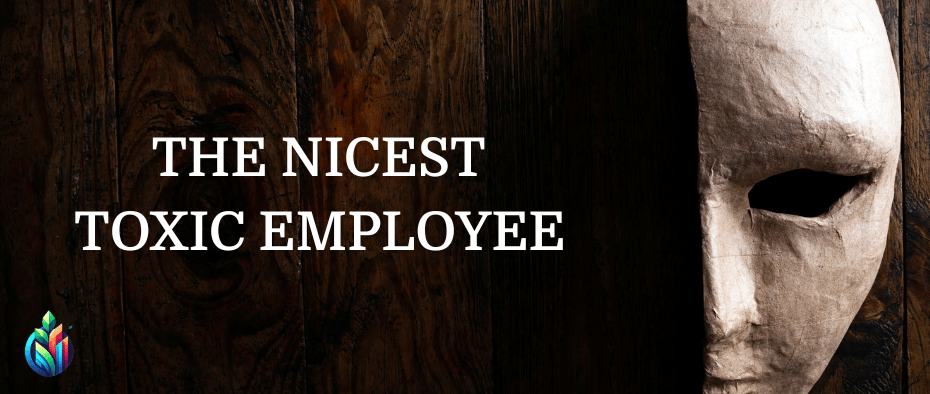
The Nicest Toxic Employee
by Disa Forde-Cook
7/24/20253 min read


Then comes the deeper culture work. Here’s what we’d suggest:
1. Establish an Employee Council
A small group of rotating team members - representing different departments or roles - can act as a sounding board and safeguard. It gives employees a space to voice concerns and offers leadership a more balanced pulse on the culture.
2. Use a Trusted Mediator
If possible, bring in an external party to facilitate conflict resolution. If not, appoint an internal party (perhaps a director or long-standing team member) who’s respected across the board. The key is neutrality and trust.
3. Avoid One-Sided Judgment
No action should be taken on a single person’s account alone. Multiple viewpoints must be considered, and all stories deserve to be heard - regardless of who may be “right” or “wrong.” This isn’t about finger-pointing, it’s about truth-finding.
4. Act Quickly—Don’t Bury the Issue
Toxicity thrives in silence. Even if the behavior seems “minor,” sweeping it under the rug only deepens the damage. The longer it goes unaddressed, the harder it is to reverse.
5. Name the Problem
Have a formal conversation about workplace bullying - what it looks like, how it shows up, and why it can’t be tolerated. This is best delivered in a workshop setting by a subject-matter expert. The goal is not just awareness - it’s equipping the team with real tools to create change. We wouldn’t lead on that, but we can help you find the right professional to do so.
6. Restructure to Minimize Harm
If the problematic person can be identified, consider restructuring their role to reduce team contact - especially if their strength is solo execution. This isn’t punishment. It’s redirection. Give them space to shine without giving them room to sabotage. In doing so, you also protect others from repeated exposure and reduce the conditions under which toxicity thrives.
Is this a permanent fix? Maybe not. But it’s a step toward a healthier environment - and one that prioritizes safety alongside performance.
Final Thoughts
Instead of quietly hoping it improves, leadership steps up with clarity, integrity, and structure. They create new feedback systems, define clear expectations, and bring in the support they need to rebuild trust without blame.
The team notices. The environment steadies. And the good people who were thinking of leaving? They begin to stay.
Trying to lead a team where “one person” keeps making waves? Let’s explore how to reset internal dynamics with intention - not heat. We help businesses realign strategy with culture, so you don’t have to sacrifice one to protect the other.
About the Series
🗂️ Case by Case is a scenario series offering grounded solutions to challenges real businesses might face. Want to work through one of your own? Let’s talk... Schedule your free consultation today!
Disclaimer: The scenarios presented in this series are fictional and intended for illustrative purposes only. Any resemblance to actual businesses, organizations, or individuals—living or dead—is purely coincidental.
Welcome back to Case by Case - a blog series that explores fictional business dilemmas grounded in very real dynamics. In each post, we unpack a scenario that service providers, team leaders, and creative entrepreneurs may recognize all too well - offering one possible path forward.
Today’s case dives into one of the most damaging yet hard-to-pin-down dynamics in any workplace: the employee whose charm masks corrosive behavior. Their deliverables are polished, but behind the scenes, they’re unraveling the culture, one comment at a time.
The Scenario
A charismatic team member delivers great work - but is quietly wreaking havoc: withholding info, undercutting leadership behind closed doors, and making teammates second-guess their contributions. They always have a laugh and an excuse - and leadership keeps letting it slide.
The culture is slowly souring, and high performers are quietly considering exits.
DNFC Consulting's Take:
This scenario plays out far too often. And here’s the kicker: leadership rarely intends to lose great employees while keeping the toxic one, but it happens - not through direct choice, but through inaction.
Before anything else, the business must cover its legal bases. Everyone has rights, and no solution should encroach on them. A solid strategy begins with fairness and compliance.


DNFC Consulting
Unlocking your business’ potential through strategic solutions!
Connect with us
SUbscribe to our mailing list
dnfcconsulting@gmail.com
+1-246-239-0215
© 2025. All rights reserved.
